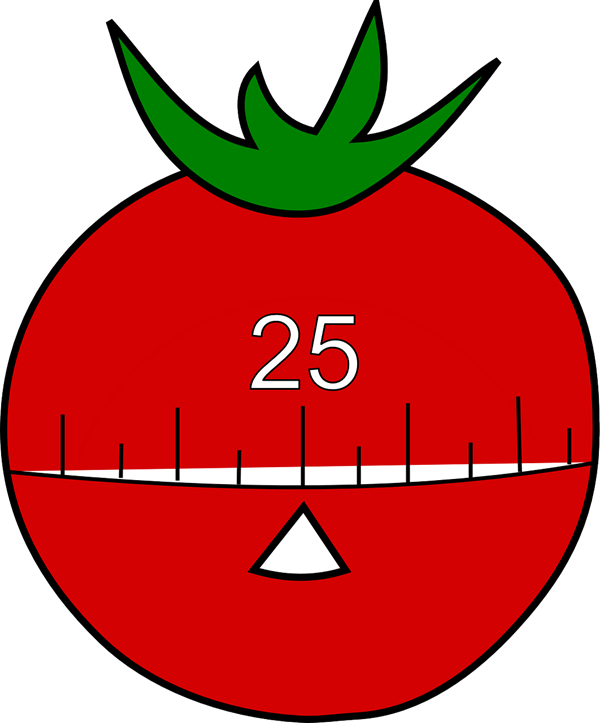Mastering the 25-Minute Pomodoro Technique for Work and Studies
I have personally tried the 25-minute ‘Pomodoro technique’ and found it to be an effective method for tackling pending projects and tasks. It is a powerful tool for addressing procrastination. In this discussion, we will explore how to effectively use this time management method and evaluate its efficacy in promoting the timely completion of tasks.
The origins of this approach can be traced back to the 1980s when it was crafted by Francesco Cirillo, a prolific author in the field of time management. The method derived its name from the Italian word for “tomato” because Cirillo, during the process of testing and designing, relied on a tomato-shaped kitchen timer.
Furthermore, the Pomodoro technique has demonstrated its remarkable utility, particularly for students. It harnesses a psychological quirk that compels our minds to prioritize task completion when faced with a deadline, followed by a rewarding break.
This technique improves concentration and efficiency, which proves particularly advantageous for students looking to streamline their study habits. As it promotes the breaking down of tasks, it can be an invaluable tool for children as they prepare for exams, particularly for subjects that require memorization. Nonetheless, adults can also reap the advantages of this approach, which can prove to be a lifesaver for individuals facing work deadlines.
No matter what work you want to complete, whether it is as simple as something like cleaning your home or something related to your academics or profession, you can implement this technique to successfully finish the work on time.
Why is the Pomodoro Technique designed around a 25-minute time interval?
Research indicates that the typical human attention span, particularly for those aged 12 and above, falls within the range of 20 to 40 minutes. Francesco Cirillo, the creator of this method, developed it with a broad demographic in mind, and 25 minutes appears to strike a balance that accommodates all. This duration provides ample time for meaningful focus without leaving individuals feeling that no progress has been made, while simultaneously preventing distractions by being concise enough that anyone can commit to it for a mere 25 minutes.
From my experience with this technique, I can say that there is a psychological compulsion to resume the task at hand when we unconsciously sense that half an hour has passed. Specifically, I find that the 25-minute work period followed by a 5-minute break creates a perfect balance—there’s no overwhelming pressure from the clock, yet it ensures the break doesn’t extend too long, encouraging us to get back to work before another cycle begins.
The Five Steps
You can easily apply this method to accomplish various tasks or projects by following a straightforward, five-step process. All that’s needed is your commitment and determination.
#1 Goal Setting – To effectively tackle any task, it’s imperative to have a clear understanding of the precise objectives. Without clear goals, motivation often wanes. So, in the initial step, carefully choose your task and thoughtfully plan your course of action. To make the task more manageable, break it down into smaller, more achievable parts. This segmentation allows you to work on one portion at a time.
While it’s not always necessary to break your task into segments that perfectly align with the 25-minute time frame, at least a portion of the task should ideally be designed to fit within the scope of a single cycle in the time management process. This process typically involves four 25-minute work periods, followed by three 5-minute breaks and one half-hour break. Ensuring that at least a portion of the task is achievable within this one cycle serves as a motivating milestone toward overall task completion.
# 2 Set the Timer – This step is super important. Use a timer, like your phone’s alarm, and set it for 25 minutes. When it rings, take a clear 5-minute break. You must stick to these exact time durations. Don’t let your work or breaks drag on, or your mind might trick you into procrastinating. The whole point of using the timer is to discipline our mind so not following the timer will defeat the purpose of using this technique.
# 3 Focus – Keep in mind, that it’s just 25 minutes of dedicated focus. Remind yourself of this, and pour all your energy into those brief minutes. Fully commit to each 25-minute session as if they’re the most crucial moments. This mindset will help you concentrate without being easily sidetracked.
# 4 Enjoy Your Break – In this entire process, the 5-minute break is just as crucial as any other step. It’s like the fuel you need to power through another determined 25 minutes of work. But, remember, when you’re on a break, avoid engaging in activities that demand focus, such as using your phone or watching TV. Instead, take those 5 minutes to unwind, maybe sip a glass of water, or try a quick mindfulness exercise. Then, you will be all set to get back to work.
#5 Repeat After a Long Break – A full cycle of the Pomodoro method wraps up once you’ve successfully completed four rounds of 25 minutes of work followed by a 5-minute break. After the fourth round, you’re rewarded with a generous 30-minute break.
During this half-hour break, you have some options. You can choose to enjoy an episode of your favorite TV series or use your phone for a bit. Alternatively, you can opt for a quick 20-minute power nap(only if it is essential) to rejuvenate yourself before diving back into the four-part technique once more, continuing with this process until your tasks are complete.
However, it’s vital to stick to the designated time for this longer break. Since it’s a substantial pause, there’s a temptation to delay returning to work, but it’s essential to stay determined and not let procrastination take over.
Keep repeating these cycles, which consist of four sets of 25 minutes of work followed by 5 minutes of break, until your tasks are completed. Train your mind to adhere to the clock and use this method to develop the ability to work and take breaks as needed.
Does It Really Work?
Like any other method, whether it proves effective or not hinges entirely on your dedication. This time management technique itself doesn’t eliminate procrastination or magically accomplish your goals; your determination to complete tasks is what truly counts. However, the 25-minute time frame isn’t overly long, and it’s effective from a psychological perspective in keeping you on track. The subsequent 5-minute break helps alleviate feelings of overwhelm and stress, creating an ideal balance between work and rest.
Notably, most of us find it challenging to maintain focus on a task for extended periods, but when presented with shorter durations of work followed by a break, our minds tend to stay more engaged in completing the task at hand. In my view, and in the experience of many others who have used this technique, it’s undeniably an effective method for task completion by implementing a well-organized and strategic approach.
There are many ways to manage your time, but the Pomodoro technique is one of the easiest and most useful. It’s simple because it doesn’t make you work for a long time, which can be tough for some people. The short breaks help you reset quickly without getting distracted, unlike long breaks.
This method is also good for your health because it lets you stay focused while not stressing your mind too much. Taking the right breaks ensures that your work doesn’t harm your peace of mind or lead to stress-related health problems. Some people also believe this method is helpful for kids with ADD/ADHD because it has an organized way of focusing on tasks for a short time.
Many folks prefer methods like the 52/17 principle, where you work with intense focus for 52 minutes followed by a 17-minute break. According to them, the 52/17 principle is better because it doesn’t break the flow as often as the Pomodoro method. But, in my experience, a 5-minute break in the Pomodoro technique doesn’t disrupt the flow. On the other hand, aiming for 53 minutes of continuous work can feel discouraging. Also, two rounds of the Pomodoro technique, totaling 1 hour, can achieve the same amount of work without making you feel overwhelmed.
Different approaches work for different people, so you should try them out to see what works best for you. To learn more about the Pomodoro Technique, I recommend reading the book “The Pomodoro Technique” by Francesco Cirillo, where he shows how to master this method for achieving seemingly massive goals. For effectively dealing with procrastination and learning how to achieve your goals by making proper use of your time I highly recommend John Assaraf’s “Winning the Game of Procrastination” program.
I hope you enjoyed reading this post. I would love to hear your thoughts and experiences on this topic. Your input motivates and greatly contributes to the improvement of this blog. Please take a moment to share your comments below. If there are any important points or insights I may have missed, please feel free to mention them in the comments.
If you found this post informative or enlightening, I encourage you to help spread the word by sharing it on your social networks.
If you have specific questions or concerns, don’t hesitate to reach out via the contact page.

